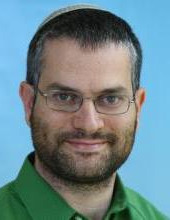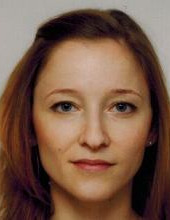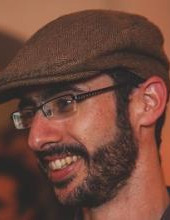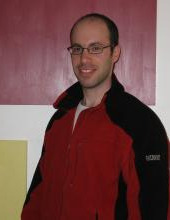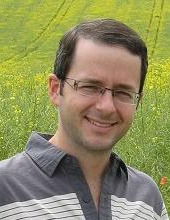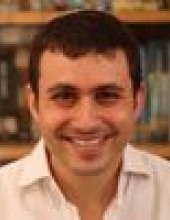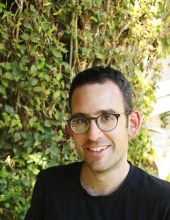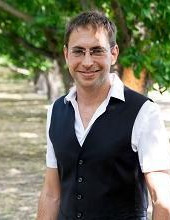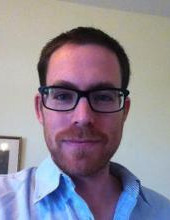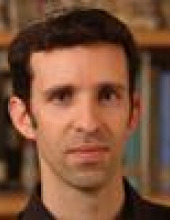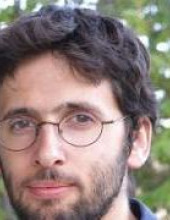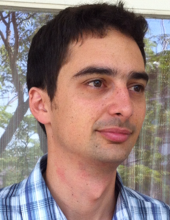Subject: Biface Morpho-Technological Variability at Gesher Benot-Ya‘aqov and its Significance to the Cultural, Social and Cognitive Evolution of Middle-Pleistocene Hominins in the Levant
Supervisor: Prof. Naama Goren-Inbar
Abstract: Within the framework of my PhD thesis I wish to test and analyze the morpho-technological variability in the biface tools assemblage from the Lower Paleolithic site of Gesher Bneot-Ya‘aqov. This site is exceptional in the Levant with respect to both the wealth and variety of finds and the cultural tradition reflected in the production of stone tools. Furthermore, the stone tool assemblage in general, and specifically the bifacial component, exhibit a unique similarity to bifacial tool assemblages form Africa. Thus, with respect to the dating of the site, it is interpreted as representing one of the earliest waves of hominin migration out of Africa.
The bifacial tool assemblage from the site has been typo-technologically analyzed using traditional attribute analysis within the framework of the forthcoming fourth volume of the excavation report. The morphological aspect of the tools has been analyzed using traditional morphological methodologies for biface shape analysis which are based on a small number of metrical indices and qualitative observations. This analysis indicated high morphological homogeneity along the occupational sequence at the site, but due to its relatively low resolution had difficulties in identifying finer morphological trends and patterns.
The renewed analysis within the framework of the current study will apply 3 dimensional digital models of the artifacts, alongside multivariate statistical methods. These provide high-resolution quantitative comparisons which allow the identification of archaeologically significant morphological trends and patterns. Furthermore, the application of computerized spatial tools will allow to correlate morphological patterns to spatial and chronological aspects at the site. Additionally, a comparison of the results to those received from the analyses of additional sites from the Levant and Africa will permit to sharpen the similarities and differences between different cultural traditions at an inter-regional scale. Finally, the integration of experimental results could allow to interpret the observed morpho-technological variability as stemming from cognitive, social and cultural aspects of Middle Pleistocene hominins.
Publications:
Books:
Goren-Inbar, N., Aplerson-Afil, N., Sharon, G., Herzlinger, G. 2018. The Acheulian site of Gesher Benot Ya'aqov volume IV: The lithic assemblages. Springer: Dordrecht.
Articles:
Herzlinger, G., Goren-Inbar, N. UNDER REVIEW. Do a few tools necessarily mean a few people? A techno-morphological approach to the question of group size at Gesher Benot Ya‘aqov, Israel. Journal of Human Evolution,
Herzlinger, G., Wynn, T., Goren-Inbar, N. 2107. Expert cognition in the production sequence of Acheulian cleavers at Gesher Benot Ya'aqov, Israel: A lithic and cognitive analysis. Plos One, 12(11): e0188337
Zaidner, Y., Porat, N., Zilberman, E., Herzlinger, G., Almogi-Labin, A., Roskin, J. 2017. Geo-chronological Context of the Open-air Acheulian Site at Nahal Hesi, Israel. Quaternary International, 464(A): 18-31.
Herzlinger, G., Goren-Inbar, N., Grosman, L. 2017. A New Method for 3D Geometric Morphometric Shape Analysis: The Case Study of Handaxe Knapping Skill. Journal of Archaeological Science: Reports, 14: 163-173.
Goren-Inbar, N., Aplerson-Afil, N., Sharon, G., Herzlinger, G. 2015. A New Type of Anvil in the Acheulian of Gesher Benot Ya’aqov, Isarel. Philosophical Transactions of the Royal Society B, 370(1682): 20140353.
Herzlinger, G., Pinsky, S., Goren-Inbar, N. 2015. A Note on Handaxe Knapping Products and their Breakage Taphonomy: an Experimental View. Journal of Lithic Studies, 2(1): 65-82.
Herzlinger, G., Grosman, L., Goren-Inbar, N. 2013. The PPNA Quarry of Kaizer Hill, Modiin, Israel - The Waste Piles. in Stone Tools in Transition: From Hunter-Gatherer to Farming Societies in the Near East. Borrell, F., Inbánez, J.J., Molist, M., (eds.). 395-405
Herzlinger, G. 2012. The Downslope Movement of Lithic Artifacts: A Field Experiment. Journal of the Israel Prehistoric Society, 42: 1-21.
Rotenstreich stipend 2017/18
Presidential Stipend 2015/16



